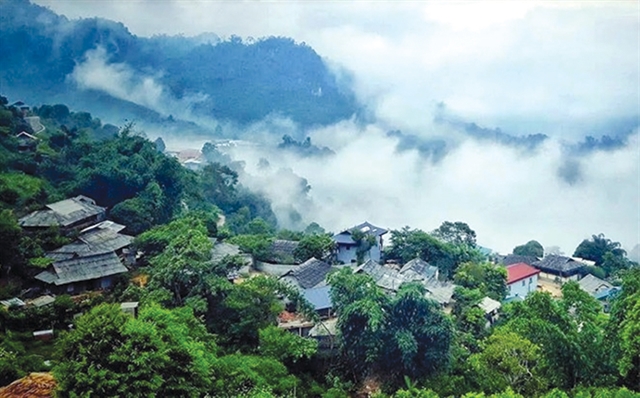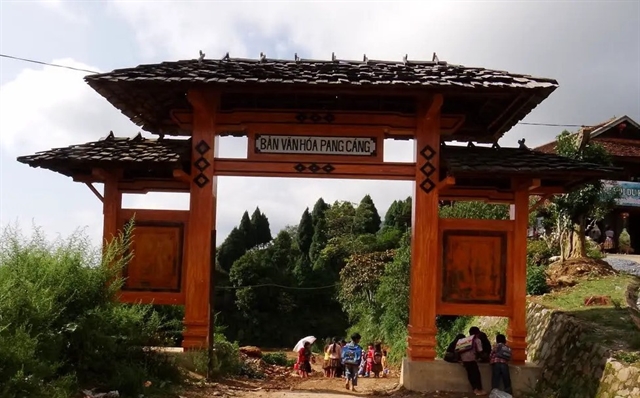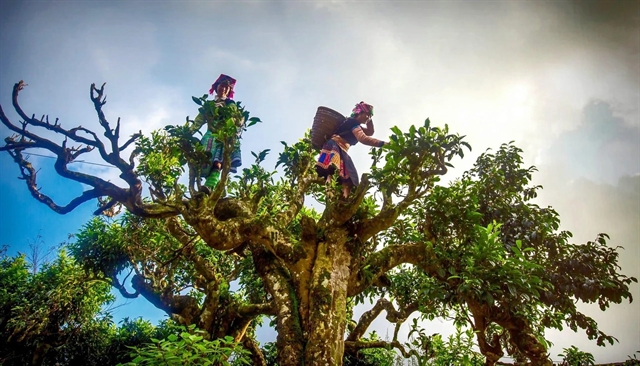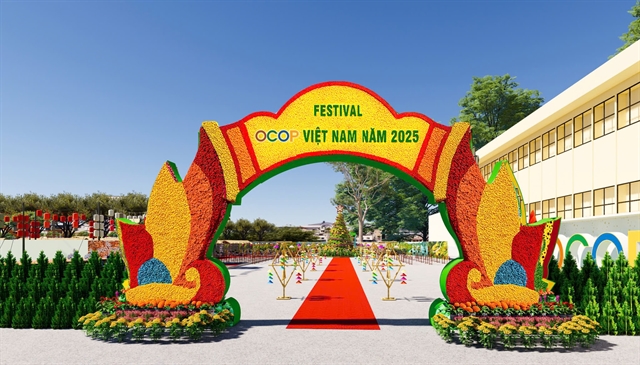 Travel
Travel


|
| Pang Cáng Village is magically soaked in the morning mist. — Photo baoyenbai.com.vn |
Perched at an enchanting altitude of more than 1,300m above sea level, the ancient village of Pang Cáng beckons like a mystical oasis in the clouds.
Home to the vibrant Mông People, this hidden gem in Suối Giàng Commune, Văn Chấn District, Yên Bái Province, has earned the moniker "The Happy Village in the Clouds" for its breathtaking natural beauty, captivating traditions, and timeless charm.
More than 200 years ago, the Mông people migrated from other regions to settle in this village. Initially, the village comprised just a few dozen households, but over time, it flourished and evolved into one of the largest ancient villages of the Mông People in Suối Giàng, now with 175 households.
Viewed from above, Pang Cáng resembles a watercolour painting. Among the ancient tea hills and drifting white clouds atop the mountains, traditional Mông-style houses constructed primarily from wood, dot the landscape.

|
| Pang Cáng Village was formed more than 200 years ago. — Photo mapio.net |
The locals predominantly earn a living by cultivating Shan tuyết tea, renowned for its exquisite flavour and often referred to as "fairy tea" due to its exceptional purity, scarcity and high price.
Shan tuyết tea initially grew naturally in this area and was subsequently nurtured and cultivated by generations of Mông people, resulting in its further development. The tea tree has become a symbol, an invaluable asset, and a source of pride for both the people of Suối Giàng in general and Pang Cáng in particular.
The tea trees not only hold economic value but also possess tourism and spiritual significance, intertwined with the cultural identity of the Mông ethnic group. Suối Giàng's ancient Shan tuyết tea has been recognised as a Vietnamese Heritage Tree.
In addition to tea, the locals also cultivate various other crops such as rice, corn, potatoes and cassava to meet their daily needs and foster economic growth.

|
| The Mông people in Pang Cáng Village harvest tea. — Photo baoyenbai.com.vn |
The Mông people in Pang Cáng have proudly preserved a rich and distinctive culture, passed down through many generations. One of their prominent festivals is the Gầu tào festival, traditionally celebrated in January each year to invoke favourable weather, bountiful harvests, good health, peace, and good fortune for the upcoming year. The festival commences with an ancestor worship ceremony, followed by cultural and sporting activities such as stick pushing, swinging, and singing.

|
| The Mông People in Suối Giàng harvest Shan tuyết tea. — Photo nongnghiep.vn |
During major festivals, the people of Pang Cáng gather together to dance, sing and indulge in food and drink. These festivities create a jubilant and lively atmosphere throughout the village, fostering unity and strong bonds among its inhabitants. Together, they establish and uphold village customs, gradually eradicating outdated practices while preserving and promoting their cultural identity.
Giàng A Hềnh, head of Pang Cáng Village, proudly said: "Despite the impact of urbanisation and cultural influences, the people of our village remain united, preserving their traditional culture. Our younger generation actively learns the Mông language, participates in classes teaching traditional costume-making and native cuisine. We have established brocade-making cooperatives, as well as arts and sports teams, to enhance our spiritual and material lives and foster community connections."
Nguyễn Hà Anh, a visitor from Hà Nội, added: "Pang Cáng Village is an ideal destination for those seeking to explore the culture and people of the northwest. Life here remains peaceful and simple, with hardworking, honest, and hospitable residents."
To cater to the sightseeing and leisure needs of tourists, several households and individuals have invested in building homestays, renovating houses, and embellishing accommodations to welcome guests. Additionally, the local government actively promotes and encourages households to engage in tourism, emphasising the preservation and promotion of cultural identity to enhance quality of life.
Simultaneously, efforts are being made to develop high-quality, branded tourism products, positioning Pang Cáng as an enchanting tourist destination in the northwest region. VNS




